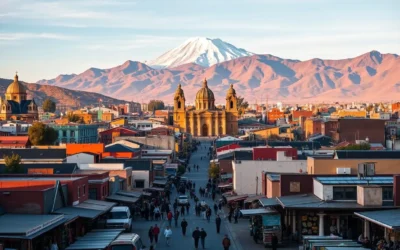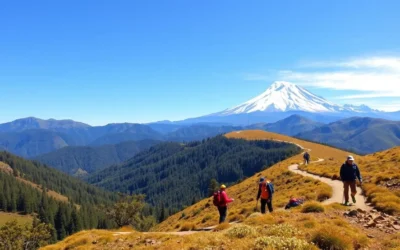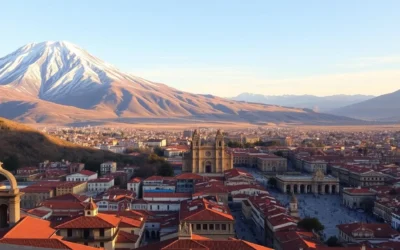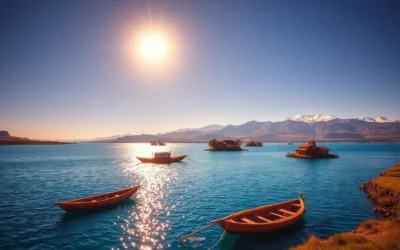✓ Accommodations ✓ Flights ✓ Rental Cars ✓ Tours & Activities
Did you know that Bolivia has one of the largest indigenous populations in Latin America, with the Aymara and Quechua peoples preserving rich cultural traditions and customs? This unique cultural heritage is reflected in the country’s vibrant festivals, which blend indigenous traditions with Catholic influences.
These colorful celebrations offer visitors an authentic glimpse into the country’s soul and identity. With festivals occurring throughout the year, you can experience Bolivia’s vibrant culture at any time. From the UNESCO-recognized Carnaval de Oruro to the mystical Alasitas Festival, you’ll have the opportunity to connect with locals and understand the country’s diverse heritage.
By attending a Bolivian festival, you’ll witness traditional music, elaborate dances, and unique rituals that showcase the country’s rich cultural tapestry.
The Cultural Significance of Festivals in Bolivia
Bolivian festivals are a testament to the country’s diverse cultural landscape, blending indigenous and Catholic influences. These celebrations are not just events; they are a vital part of Bolivian identity, reflecting the country’s history, traditions, and values.
The Andean cosmovision, or worldview, is integral to Bolivian culture, encompassing beliefs about nature, spirituality, and the universe. This worldview is vividly expressed during festivals, where rituals and ceremonies honor Pachamama (Mother Earth) and other deities.
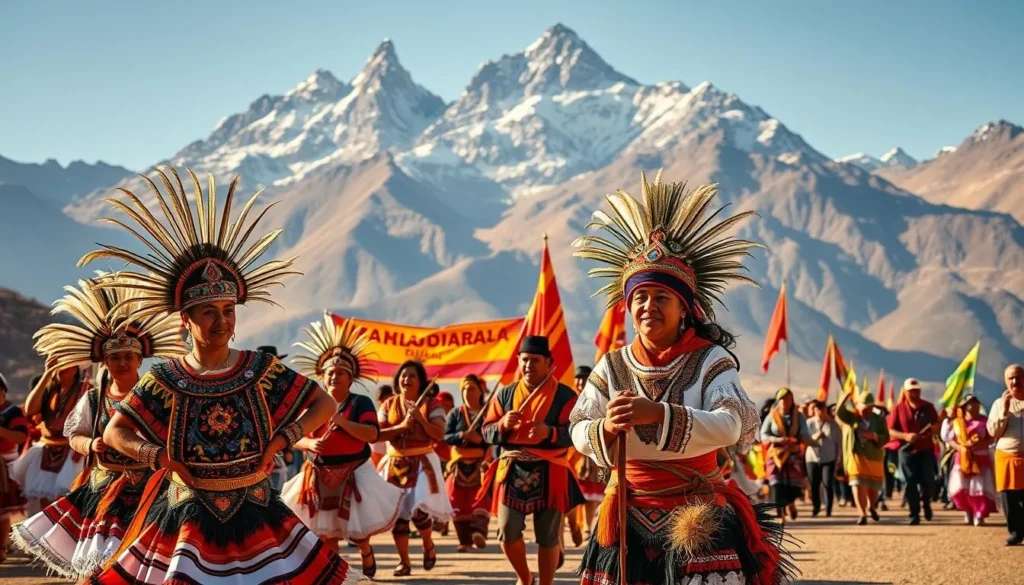
The Blend of Indigenous and Catholic Traditions
Bolivian festivals represent a unique syncretism between pre-Columbian indigenous beliefs and Spanish Catholic traditions. This blend is evident in the way festivals are celebrated, often combining Catholic rituals with indigenous customs and symbolism.
Why Festivals Are Essential to Bolivian Identity
Festivals serve as living museums that preserve ancient customs while evolving with contemporary influences. They strengthen social bonds within communities, act as expressions of cultural resistance, and preserve identity throughout Bolivia’s history. By participating in these festivals, Bolivians connect with their ancestors and maintain continuity with the past while celebrating the present.
| Aspect | Description | Significance |
|---|---|---|
| Cultural Syncretism | Blend of indigenous and Catholic traditions | Unique cultural identity |
| Communal Bonding | Strengthening social bonds within communities | Preserves community cohesion |
| Cultural Resistance | Expressions of cultural resistance and preservation | Maintains cultural heritage |
Carnaval de Oruro: UNESCO Cultural Heritage
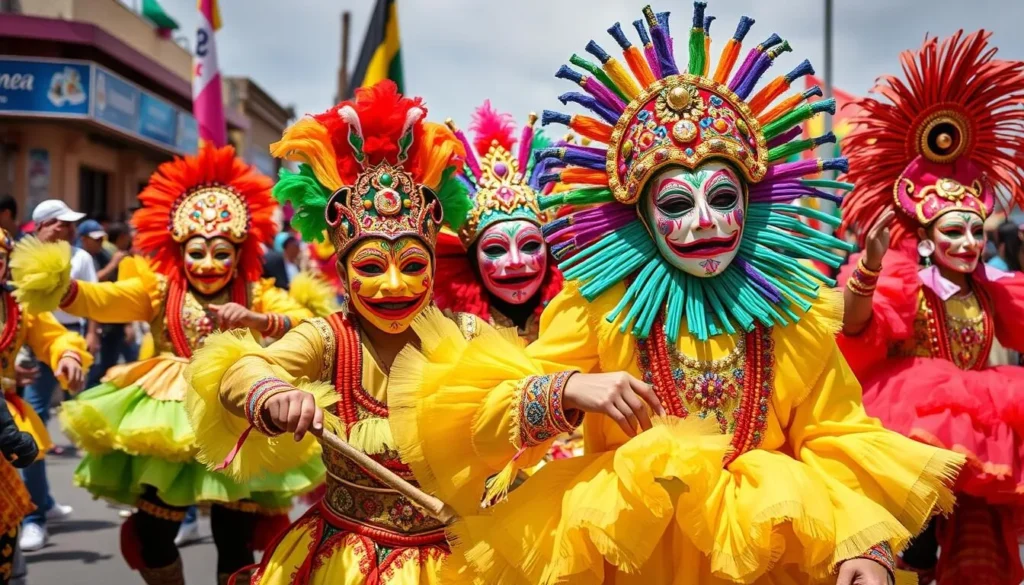
Experience the vibrant Carnaval de Oruro, a UNESCO-recognized celebration that embodies Bolivia’s rich cultural heritage. This spectacular event takes place annually in February, showcasing the country’s diverse traditions through music, dance, and elaborate costumes.
The Diablada: Dance of the Devils
The Diablada, or “Dance of the Devils,” is the highlight of Carnaval de Oruro, featuring dancers dressed as demons, angels, and mythical characters. This dance is rooted in the legend of the Virgin of the Mineshaft, symbolizing the battle between good and evil.
When and How to Experience This Spectacular Event
Carnaval de Oruro usually takes place in February before Lent. To best experience it, plan to arrive a few days early to soak in the pre-festival atmosphere. The festival culminates in a devotional pilgrimage, making it a deeply spiritual experience as well.
Alasitas Festival: Miniature Dreams and Wishes
Every year, Bolivians flock to the Alasitas Festival to buy miniature items, hoping to manifest their dreams into reality. Held on January 24th in La Paz, this vibrant celebration is a time when people come together to honor Ekeko, the Aymara god of abundance, and pray for their wishes to be granted.
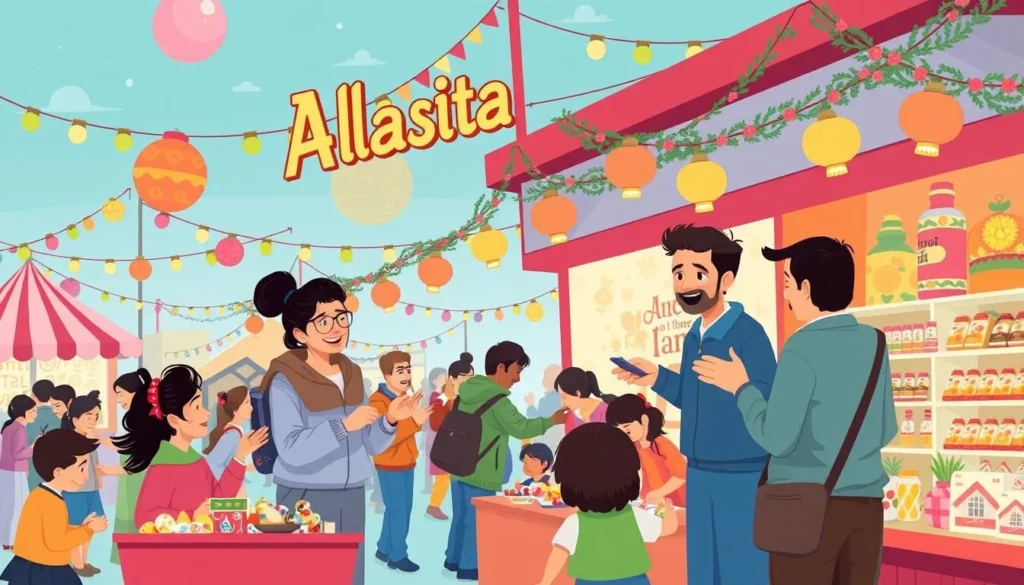
Ekeko: The God of Abundance
Ekeko is revered as the god of abundance and prosperity. Devotees purchase a figure of Ekeko to keep in their homes throughout the year, symbolizing their desire for good fortune and wealth.
Shopping at the Witches’ Market
The Witches’ Market, or Mercado de las Brujas, is a highlight of the Alasitas Festival. Here, you can find a variety of items, from miniature houses and cars to diplomas and money. These offerings are believed to attract good fortune when blessed by rituals performed by yatiris, or Aymara shamans.
The festival is not just about buying items; it’s an experience that immerses you in Bolivian culture. At this time and in this place, the air is filled with hope and anticipation as people pray for their wishes to come true.
Semana Santa in Copacabana: Easter by Lake Titicaca
Semana Santa in Copacabana is a mesmerizing blend of tradition, faith, and natural beauty. As you visit this picturesque town on the shores of Lake Titicaca, you’ll be immersed in a vibrant celebration that combines solemn religious observances with festive elements.
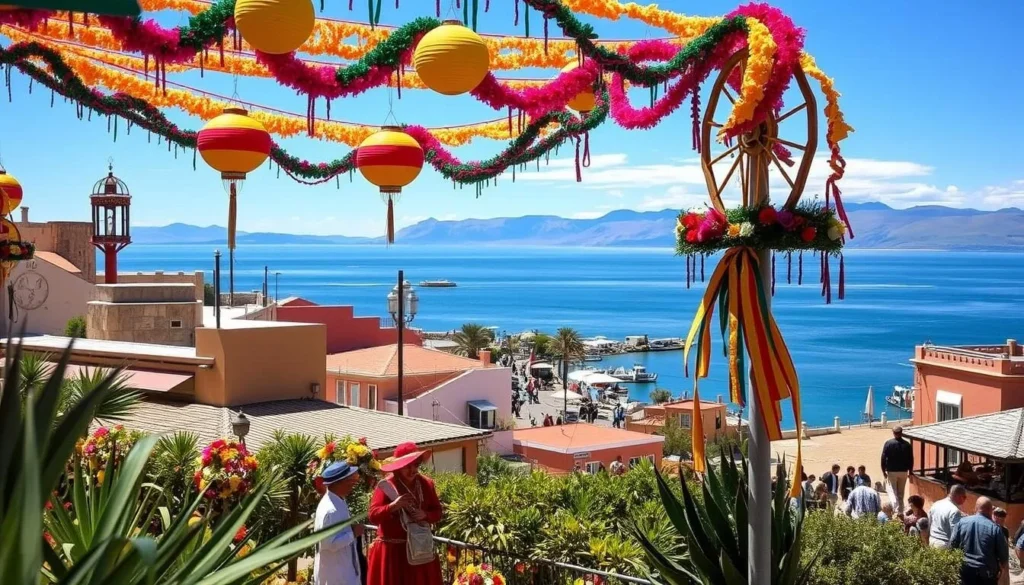
Religious Processions and Ceremonies
The processions that take place throughout Holy Week are a highlight of the Semana Santa event. On Good Friday, hundreds of pilgrims arrive on foot from La Paz, adding to the spiritual fervor. You can witness the devotion and fervor of the pilgrims as they reenact the Passion of Christ.
The Blessing of Vehicles Ritual
A unique aspect of the Semana Santa experience in Copacabana is the “Blessing of Vehicles” ritual. Cars, buses, and trucks are decorated with flowers and blessed by priests for safe travels. This colorful ceremony is a testament to the town’s patron saint, the Virgin of Candelaria.
As you participate in this significant celebration, you’ll gain a deeper understanding of Bolivian Catholic identity and the importance of the Virgin of Candelaria. The blending of religious and cultural traditions makes Semana Santa in Copacabana a truly unforgettable experience.
Fiesta Del Gran Poder: La Paz’s Grandest Parade
Experience the vibrant culture of La Paz during the Fiesta Del Gran Poder, one of Bolivia’s most significant festivals. Between May and June, the city comes to a standstill as thousands of locals participate in this grand celebration.
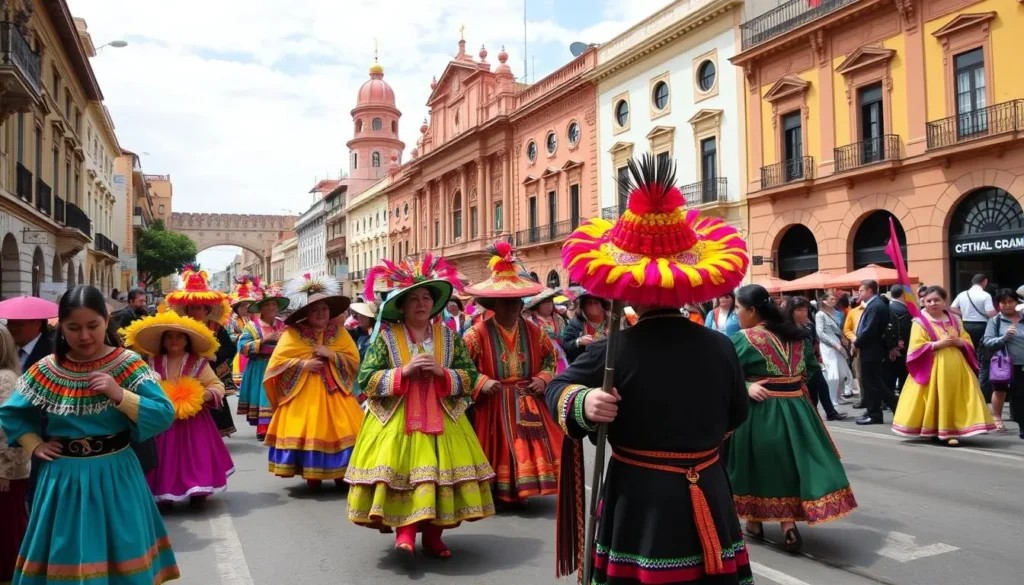
25,000 Dancers in Traditional Costumes
The Fiesta Del Gran Poder features over 25,000 dancers dressed in elaborate costumes, performing traditional Bolivian dances through the streets of La Paz. The dancers are organized into fraternities that spend all year preparing their choreography and costumes.
Religious Significance and Street Celebrations
The festival honors “El Señor del Gran Poder” (The Lord of Great Power), a representation of the Holy Trinity. The celebration has grown from a small neighborhood procession into La Paz’s largest religious festival, transforming the city into a vibrant spectacle with thousands of participants and spectators.
Inti Raymi: Celebrating the Winter Solstice
Bolivia celebrates the winter solstice with great fervor through the Inti Raymi festival, a tradition deeply rooted in its indigenous heritage. This celebration is not just a reflection of Bolivia’s rich cultural diversity but also a testament to the country’s strong connection with its ancestral roots.
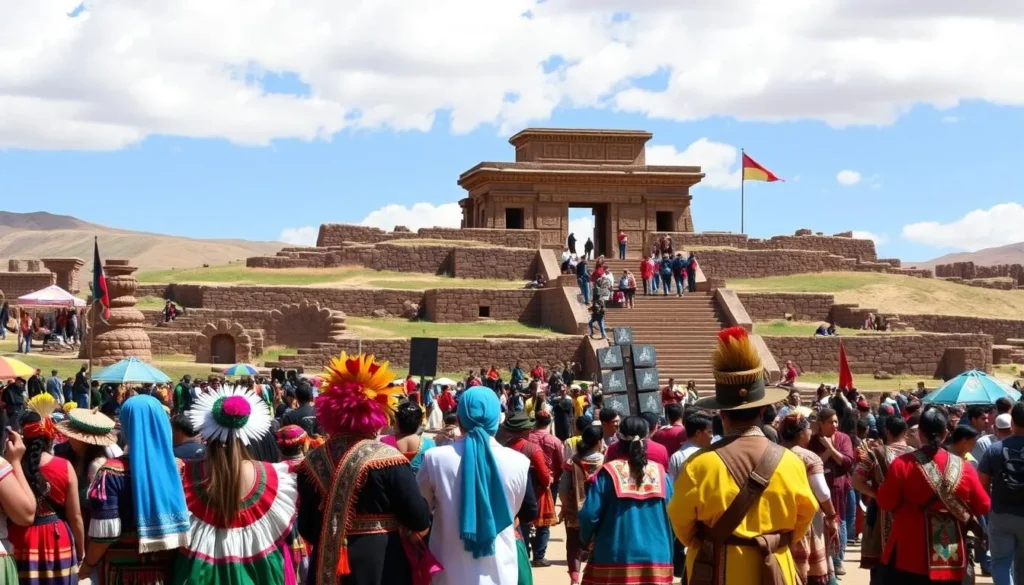
Ancient Rituals at Tiwanaku
The spiritual heart of Bolivia’s winter solstice celebration is the pre-Inca site of Tiwanaku, located on the high plains just outside of La Paz. Here, thousands gather to witness the sunrise ceremony, a spectacle that marks the return of the sun and the beginning of a new cycle.
Aymara New Year Traditions
The Inti Raymi festival is also closely tied to the Aymara New Year traditions. During this time, the Aymara people make ritual offerings to Pachamama (Mother Earth) and the sun, including coca leaves, incense, and sometimes llama fetuses, to ensure good health and fortune in the coming year.
The winter solstice, observed on June 21, has been a national holiday in Bolivia since 2009, highlighting the country’s recognition of its indigenous heritage. Visitors can experience this vibrant celebration not just at Tiwanaku but throughout the Andes region, including countries like Ecuador and Peru.
For those planning to attend, it’s essential to be prepared for the cold pre-dawn hours and to respect local customs and traditions. Understanding the significance of Inti Raymi and participating respectfully can make for a truly enriching experience.
Urkupiña Festival: Cochabamba’s Colorful Celebration
In honor of the Virgin of Urkupiña, the town of Quillacollo hosts a grand festival that showcases Bolivia’s rich cultural heritage.
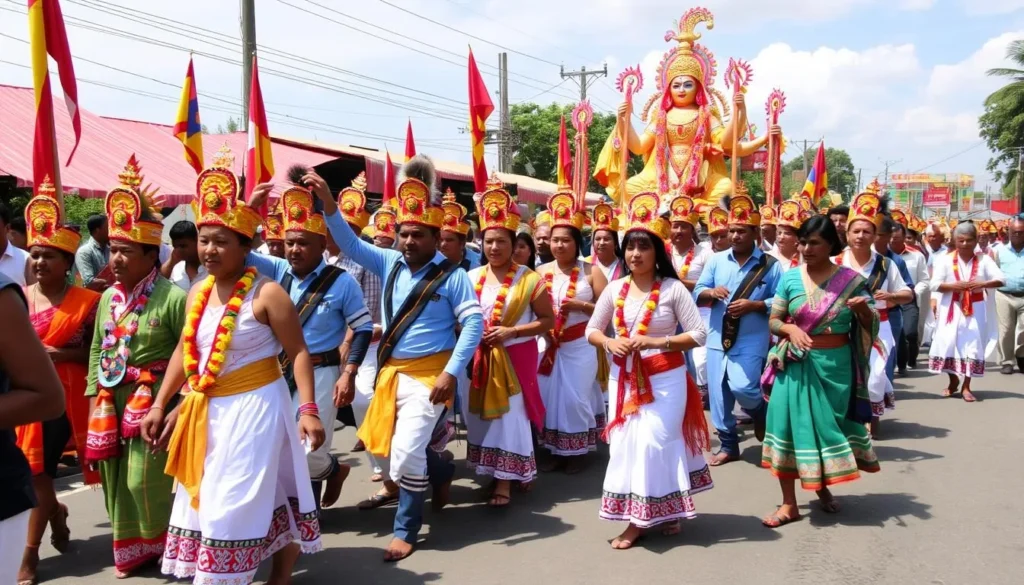
The Autochthonous Parade and La Entrada
The festival features the Autochthonous Parade and La Entrada, showcasing traditional dance and music. The Autochthonous Parade represents the Andean culture with extraordinary costumes and ancient instruments.
Devotion to the Virgin of Urkupiña
The Urkupiña Festival is a significant Marian celebration where devotees pay homage to the Virgin of Urkupiña. The events include a pilgrimage to Calvario hill, where devotees collect stones believed to turn into money if their prayers are answered.
Bolivia: Top Festivals to Check Out When Visiting Throughout the Year
Bolivia’s festivals are a testament to its vibrant cultural identity. The country celebrates numerous festivals and events throughout the year, reflecting its rich cultural heritage.
January to June: Dry Season Celebrations
During the dry season, Bolivia hosts several notable festivals. You can experience Alasitas in January, Carnaval de Oruro in February, Semana Santa in March/April, and Fiesta del Gran Poder in May/June. These celebrations showcase the country’s diverse traditions.
July to December: Rainy Season Festivities
The rainy season brings its own set of festivals and events. Notable holiday celebrations include Independence Day on August 6, Urkupiña in August, All Saints/Day of the Dead in November, and Christmas traditions. These festivals offer a unique glimpse into Bolivian culture throughout the country.
![]()
Tips for Attending Bolivian Festivals
As you prepare to immerse yourself in Bolivia’s vibrant festivals, here are some essential tips to enhance your experience. Bolivian festivals are a true reflection of the country’s rich cultural heritage, and being prepared will allow you to fully appreciate the experience and connect with the locals.
What to Wear and Bring
When attending Bolivian festivals, it’s crucial to dress appropriately for the occasion and the climate. Consider the altitude and weather conditions when choosing your attire. For religious events, modest clothing is recommended. Don’t forget to bring essentials like sun protection, water, and small denominations of cash for vendors. A camera with extra batteries is also a must to capture the vibrant moments.
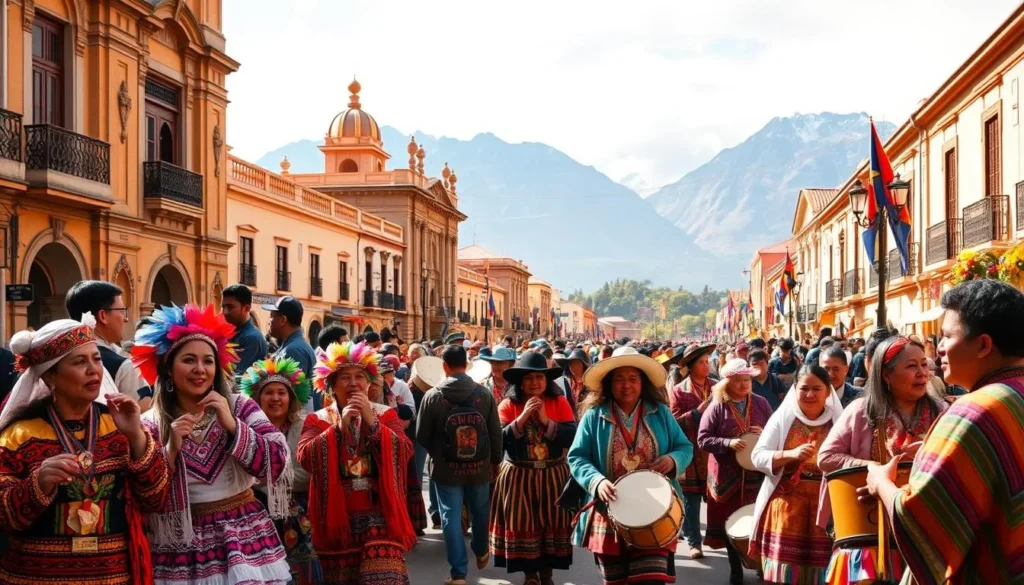
Cultural Etiquette and Respect
Understanding and respecting local customs is vital when attending Bolivian festivals. Be mindful of your behavior during religious ceremonies and parades. Sampling local food and drinks like chicha (fermented corn beer) can be a fun experience, but do so responsibly. It’s also important to be aware of your surroundings and keep an eye on your items. When taking photos, always ask permission before capturing people or sacred rituals.
Additionally, plan ahead by booking your accommodation in advance, as hotels in festival locations tend to fill up quickly. Be prepared for potential disruptions to public transportation and plan your travel accordingly. By being informed and respectful, you’ll be able to fully enjoy the festive atmosphere and create lasting memories of your time in Bolivia.
Conclusion: Experiencing the Heart of Bolivian Culture
Bolivia’s festivals are more than just celebrations; they’re a gateway to understanding the country’s soul. By participating in these vibrant events, you’ll gain an authentic experience of Bolivian culture and traditions. From the colorful Carnaval de Oruro to the spiritual Inti Raymi, each festival offers a unique window into the nation’s rich heritage. As you plan your trip to South America, consider timing your visit to coincide with one of these incredible celebrations and be a part of Bolivia’s living traditions.
—
The above is subject to change.
Check back often to TRAVEL.COM for the latest travel tips and deals.


